A beverage is a liquid normally consumed by humans for the purpose of quenching thirst. Some add nutrition and energy to your body, while some are for enjoyment.
Beverages come in various forms, such as alcoholic beverages (e.g., spirit, wine, beer) and non-alcoholic ones (e.g., coffee, milk, tea, soft drinks, etc.).
Overall, they are fundamental parts of a country/region’s culture and cuisines.
Each country, region, or community has distinctive drinking options featuring its history, geography, climate, and also lifestyle. They also have different drinking habits.
Beverages are made from several ingredients; common ones are fruits/vegetables, beans, tea, dairy products, and grains. Hence, different options have different tastes and textures.
The terms “drinks” and “beverages” are used interchangeably. However, in some contexts, they are slightly different.
Plus, to fully learn about the world of beverages, I’ll show you their history, and some key information about national, traditional, street, and fusion specialties.
You’ll also learn about different beverage types and their common components. Don’t miss out on some social drinking manners and pairing these drinks with foods globally.
Tips: By clicking on the filter, you can discover more about these wonderful drinking choices.
List of Beverages with Filters
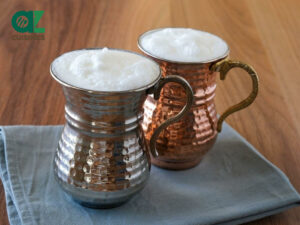
Ayran is a Turkish cold drink made from yogurt, water, and salt.

Bạc xỉu is a sweet Vietnamese coffee due to it contains more milk than coffee.

Bia refers to several types of Vietnamese beer, enjoyed for its rich drinking culture.

Cà phê cốt dừa is a Vietnamese beverage made with coffee, coconut milk, and condensed milk.
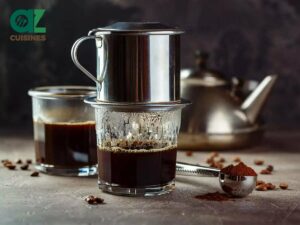
Cà phê đá is a strong Vietnamese iced coffee known for its robust and bitter flavor due to Robusta beans.
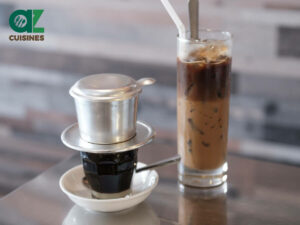
Cà phê sữa đá is a traditional Vietnamese iced coffee sweetened with condensed milk and served over ice.
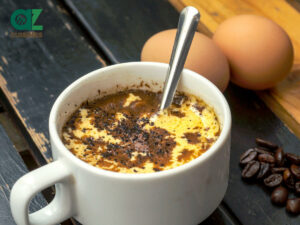
Cà phê trứng is a Vietnamese coffee topped with a creamy, sweet blend of egg yolk and condensed milk froth.

Cam vắt is the Vietnamese version of orange juice, which is made by squeezing fresh oranges.

Chal is a Central Asian beverage made by fermenting camel milk.
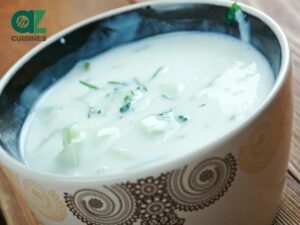
Chalap is a traditional drink made from local yogurt in Central Asia.

Jarma is a Kyrgyz beverage made by cooking ground and fried cereals in water and adding liquid yogurt.

Kazakh wine refers to wine in Kazakhstan.

Kompot is a popular European drink made by simmering fruits in sweetened water.
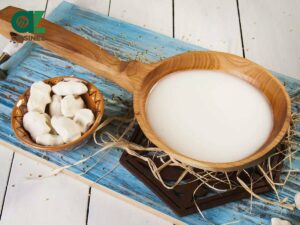
Kumis is a fermented beverage made from mare milk in Mongolia and Central Asia.

Maksym is a Kyrgyz beverage made by boiling cereals in water and letting them ferment for a short time.

Nước chanh dây is a Vietnamese drink made from passion fruit juice, often sweetened and served chilled.

Nước chanh muối is a Vietnamese non-alcoholic beverage made with pickled limes, water, and optional sweeteners.

Nước dừa is Vietnamese for coconut water, the sweet and transparent liquid extracted from young coconuts.

Nước mía is a popular Vietnamese beverage made from freshly squeezed sugarcane juice.

Nước rau má is a Vietnamese herbal drink made from the juice of the pennywort plant.
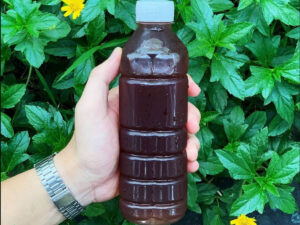
Nước sâm is a traditional Vietnamese herbal beverage made from a blend of various plants and roots, often enjoyed for its health benefits and cooling effect.
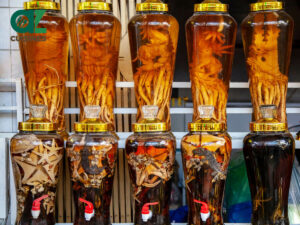
Rượu is a Vietnamese alcohol that ranges from rice-based spirits to fruit wines, reflecting regional flavors and fermentation methods.

Rượu cần is an indigenous Vietnamese wine fermented in jugs for a month and enjoyed through a long straw.
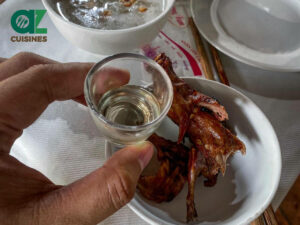
Rượu đế is a traditional Vietnamese spirit, typically distilled from rice or other grains with a high alcohol content.

Shirchoy is a type of milk tea in Uzbekistan that is often featured as a part of a breakfast meal.

Sinh tố is the Vietnamese version of smoothie, usually made from pureed fruits, fresh milk, and condensed milk.

Sinh tố bơ is the Vietnamese version of avocado smoothies, sweetened with condensed milk and fresh milk.
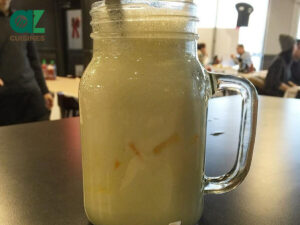
Soda trứng is a Vietnamese drink combining soda water, sweetened condensed milk, and raw egg yolk.

Sữa chua cà phê is a Vietnamese creamy and tart beverage made with coffee, yogurt, and condensed milk.
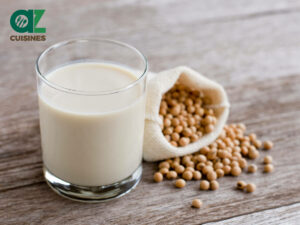
Sữa đậu nành is the Vietnamese version of soy milk, a type of plant milk derived from soybeans.
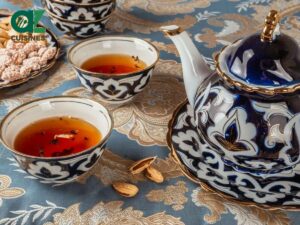
Tea in Central Asia is a respected hospitality symbol, traditionally served in a “piala,” with regionally varied preferences in types.

Trà is a drink made by steeping leaves, buds, or branches of the tea plant (Camellia sinensis) in hot or boiling water.

Trà chanh is a Vietnamese iced lemon tea that combines brewed tea with fresh lemon juice and sweetener.

Trà đá is a popular Vietnamese iced tea, served cold and often enjoyed as a refreshing street-side beverage.

Trà đào is a Vietnamese peach-flavored tea, often sweetened and served hot or cold.

Trà sen is a Vietnamese lotus tea known for its delicate and fragrant flavor of lotus flowers.

Trà sữa trân châu is a Taiwanese-inspired beverage in Vietnam consisting of milk tea with chewy tapioca pearls.

Trà tắc is a Vietnamese refreshment made by infusing tea with kumquat juice.

Trà xanh is a Vietnamese green tea known for its delicate flavor and numerous health benefits.

Vodka is a clear distilled spirit, primarily made from water and ethanol, with origins in Russia, Sweden, and Poland.
Beverages by Country
Beverage Images
Drink vs. Beverage, How Are They Different?
Let’s check the table below for a brief comparison of a drink and a beverage.
| Aspect | Drink | Beverage |
|---|---|---|
| Definition | Refers to a liquid intended for human consumption, including the most basic drink, water. | Is a drink, especially one other than water, prepared for human consumption. Beverages often have specific ingredients like flavorings, caffeine, sugar, etc. |
| Usage | Can be used both as a noun and a verb (e.g., “I drink water”). | Primarily used as a noun. |
| Implication | More casual and broad term, encompassing all types of liquids. | Slightly more formal, and commonly used in the food and hospitality industry. |
Next, keep reading to uncover the historical stories behind beverages.
What Is the Historical Background of Beverages?
The historical background of beverages reflects the evolution of human cultural practices, societies, and preparation methods. Here are six main aspects.
Origins and Necessity
Initially, the primary beverage for all human societies was water, which was essential for survival.
The history of beverages begins with the quest to find and secure safe, reliable water sources.
Traditional Use of Plants
Indigenous peoples across the world have a long history of infusing water with plant parts to create flavored drinks, resulting in the earliest form of beverage-making from plants.
Early Alcoholic Drinks
Beverages have been significantly influenced by the culture of crops. The use of crops is for making various alcoholic drinks, such as beer, wine, or spirits.
There is evidence of alcoholic beverages dating back to at least 9000 BCE and wine production as far back as 5000 BCE.
Origin of Tea
An ancient Chinese legend dates the discovery of tea to 2737 BCE. Some research indicates tea drinking in China from around the 2nd century BCE.
Health and Safety
Early on, people discovered that certain beverage preparation methods, such as fermentation, could make drinks safer by killing harmful bacteria.
This was particularly important in times and places where clean water was not readily available.
Economic Importance in the 19th Century
By the 19th century, the beverage crop industry had become economically vital.
With international trade expanding in commodities like tea, coffee, cacao, wine, and spirits, many of them become significant beverages, such as national or traditional delights, in different countries.
How Are National, Traditional, Street, and Fusion Beverages in the World?
Let’s explore deeper about beverages around the world with national, traditional, street, and fusion ones. They provide a fascinating glimpse into the cuisine and culture of each country.
National Beverages
These are specialties at the national level, which are widely consumed in the country and also well-known in other nations. They have certain historical or cultural significance, too!
Examples are vodka in Russia, sake in Japan, soju in Korea, etc.
Traditional Beverages
Traditional beverages are part of a country’s cuisine with historical roots. They are also associated with specific regions in this nation, or rituals and customs.
Some traditional offerings are also national ones if they become widely recognized as a symbol of the country’s identity.
Street Beverages
These are drink options commonly sold in public spaces like markets, festivals, street sidewalks, etc.
They offer the authentic taste of local beverages and are easy to consume on the go. Fresh coconut or sugarcane juice are popular examples in tropical countries.

Fusion Beverages
Matcha latte, which combines traditional Japanese matcha tea with Western-style milk latte, is a good instance.
In the next section, it’s crucial to have a quick look at significant kinds of beverages.
What Are Common Types of Beverages?
There are numerous beverages around the world, but in the general sense, I’ll group them into five types with examples, including:
Hot Non-Alcoholic Beverages
Ideal examples are tea, coffee, hot chocolate, or any herbal infusions.
Cold Non-Alcoholic Beverages
Smoothies, iced tea, soft drinks, and juices are some popular instances of this category.
Fermented Alcoholic Beverages
Beer and wine are two significant ones. They vary in alcohol content, depending on the ingredients and the fermentation method used.
Distilled Alcoholic Beverages
They are known for their higher alcoholic content. Examples are gin, rum, tequila, whiskey, vodka, and some Vietnamese types of rượu.
Drink Desserts
Smoothies made from several types of fruits or some liquidy sweet soups are well-loved drink desserts. They are usually served as a treat or a dessert course.
What Are the Common Ingredients in Beverages?
Here are four certain components that are widely used in making beverages around the world. You can check out more drink components here.
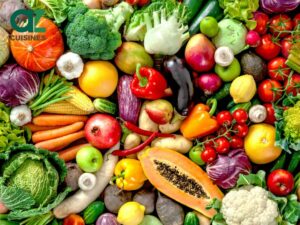
Fruits and Vegetables
Fruits and vegetables are popular items in making juices, smoothies, or wines (like grapes).
The flavor of these drinks is based on what type of fruits or veggies are used, which ranges from sour to sweet, even bitter.

Tea
Tea leaves, whether black, green, white, or oolong, are a fundamental ingredient in beverages globally.
They are diverse in flavors and aromas. Some are also packed with health benefits.

Coffee Beans
Coffee beans are roasted, ground, and brewed to create a range of coffee drinks. In the United States, coffee ranks as the second most frequently consumed beverage.

Dairy Products
Dairy, including milk, cream, and yogurt, is a staple in many beverages, creating a creamy and rich texture.

Grains
Common grains are barley, wheat, corn, and rice.
In brewing beer, grains like barley are malted and fermented. Some spirits are distilled from fermented grains like rice.
Drinking alcohol also requires appropriate manners, which I’ll explain in the next section.
What Is Social Drinking Etiquette?
Social drinking etiquette refers to customs and manners while consuming alcoholic beverages in social gatherings.
They vary between countries, cultures, and social situations, but here are some common principles to take note of.
Toasting
In many cultures, toasting is a key part of social drinking. Participants often clink glasses and say a phrase like “Cheers” or its equivalent in the local language.

Celebratory Traditions
In Western countries, it’s common to celebrate good news, big life events, or special occasions with a group sharing alcoholic drinks.
Appropriate Behavior
Offering someone an alcoholic drink is generally seen as a gesture of goodwill. It is also important to make a friendly gesture in a social setting.
Understanding Local Customs
In some cultures, there are specific traditions related to drinking. For instance, in Korea, it’s customary to turn away from elders when taking a sip of alcohol.
Have you ever found it difficult to match drinks with dishes? If yes, don’t skip the following part.
How To Pair Beverages with Dishes?
Pairing the right beverage with dishes is simple if you know the guidelines below.
Complement or Contrast
When pairing drinks with food, the combinations should go well together without overshadowing the dish’s taste.
They can either complement the flavors (like a creamy beverage with a creamy dish) or go for a contrast (such as pairing a spicy dish with a sweet beverage to cool the heat).
Regional Pairings
Often, traditional food offerings and beverage pairings from the same region work well together, like Italian wine with Italian cuisine.
Dessert Pairings
For desserts, sweet beverages like dessert wines or sweet cocktails can complement the sweetness in dishes.
In some Asian countries, like Vietnam or China, tea is a popular choice as tea can provide a balancing bitterness or astringency to sweet desserts.
Lastly, there are other concerns related to these liquid offerings that you might wonder about.









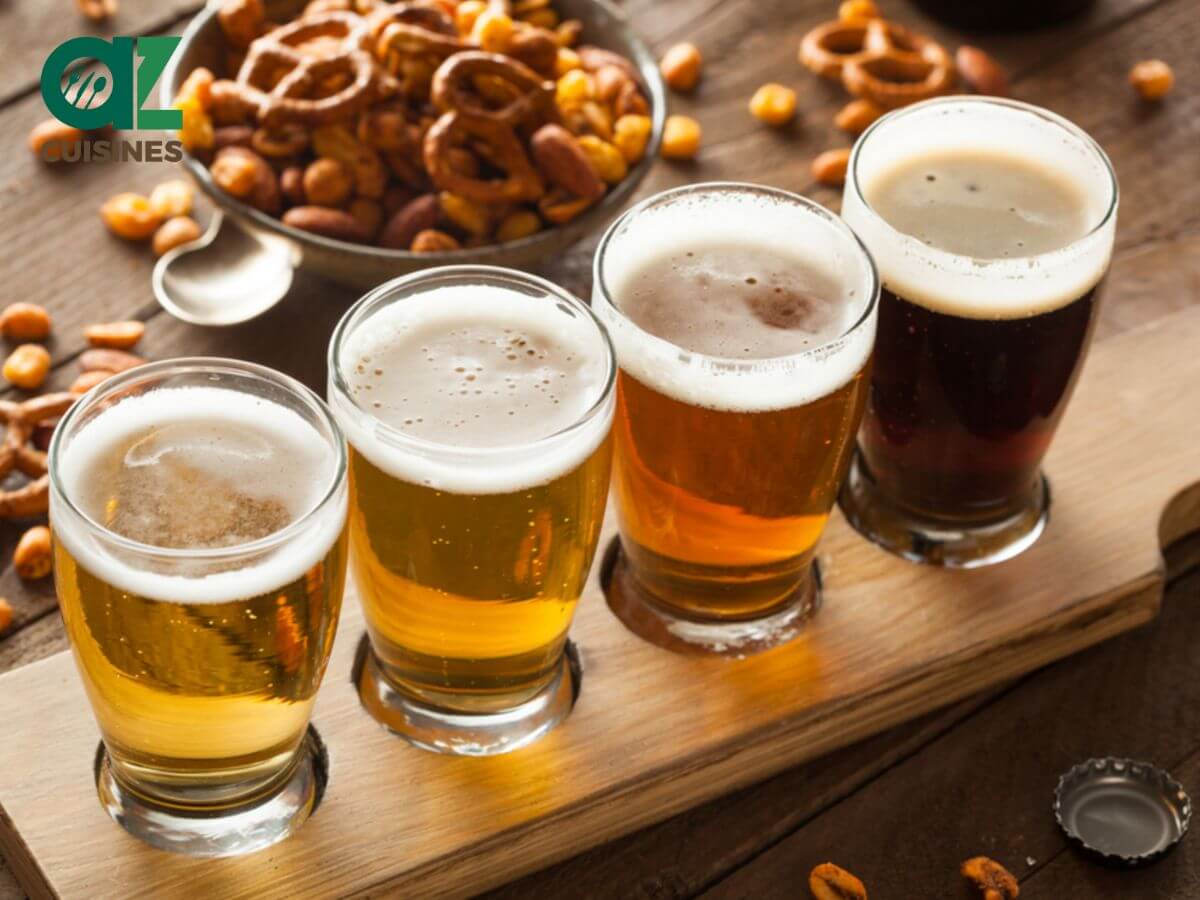

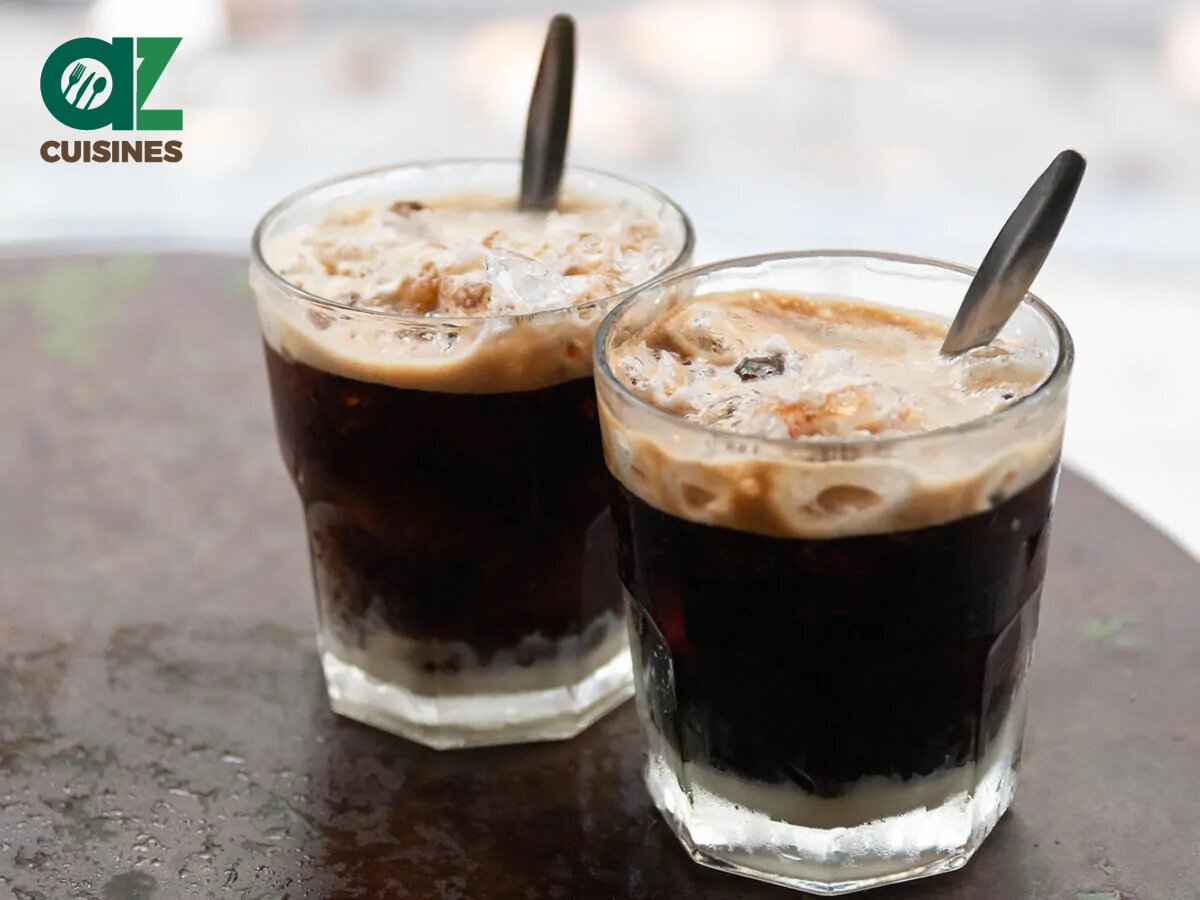
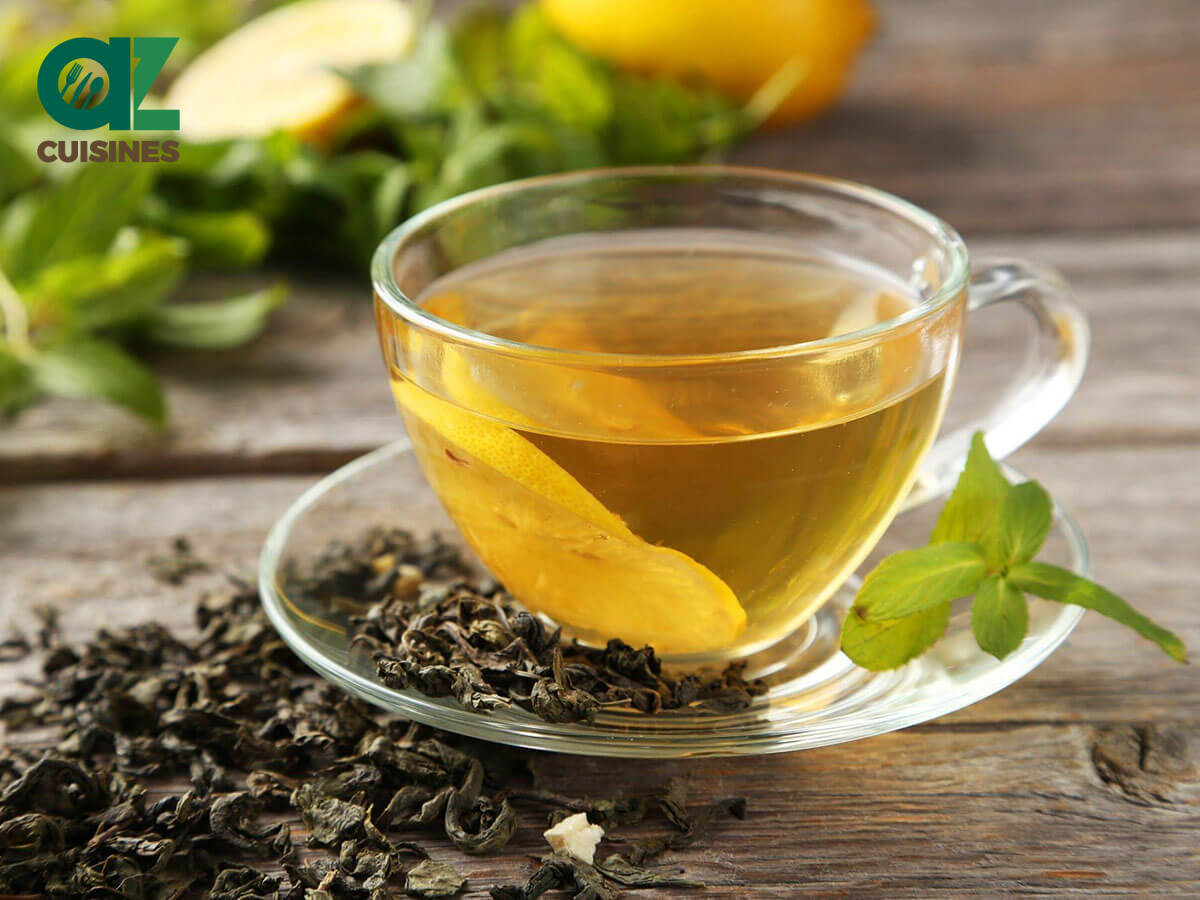

Adam Sam
Senior Food and Drink Editor
Expertise
Food Writer & Recipe Developer, Recipe Tester, Bartender, Cooking-video Maker, Editor In Chief
Education
Adam Sam, an experienced food writer and recipe developer, is passionate about blending diverse culinary traditions, national dishes, and innovative beverages, showcasing his proficiency in both traditional and modern recipe testing.
As the Editor-in-Chief, he elevates culinary content from street food to fine dining, focusing on Western cuisine and types of drinks at azcuisines.com, and is professional in creating engaging cooking videos that simplify complex dishes and ingredients.
His passion for food is evident in his writing, where he uniquely merges various cultures, traditions, and contemporary trends, skillfully combining classic recipes with modern cooking methods.